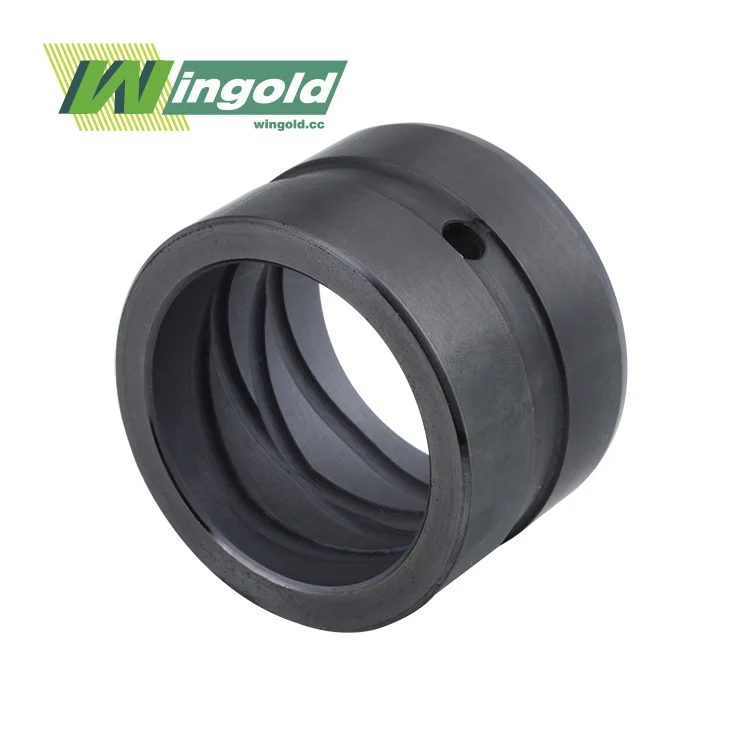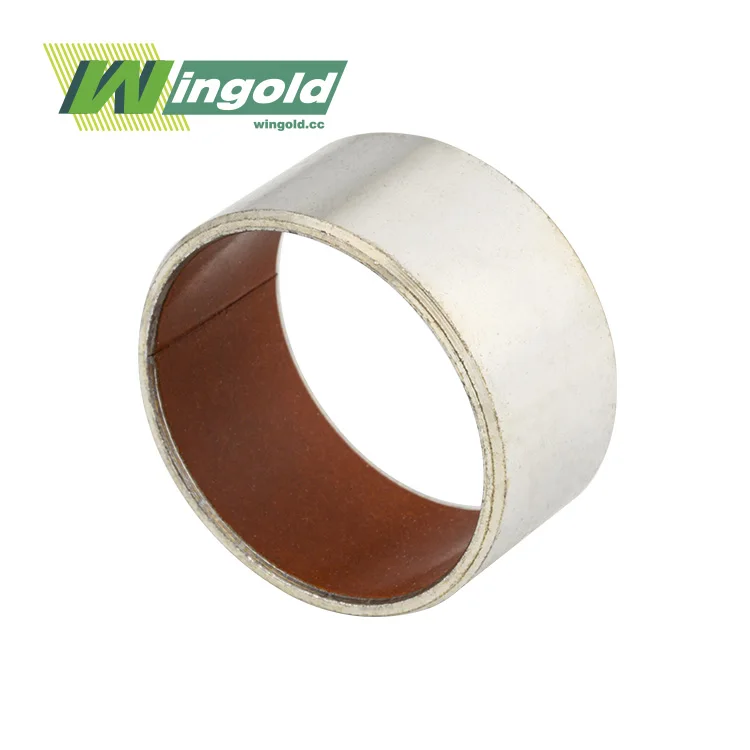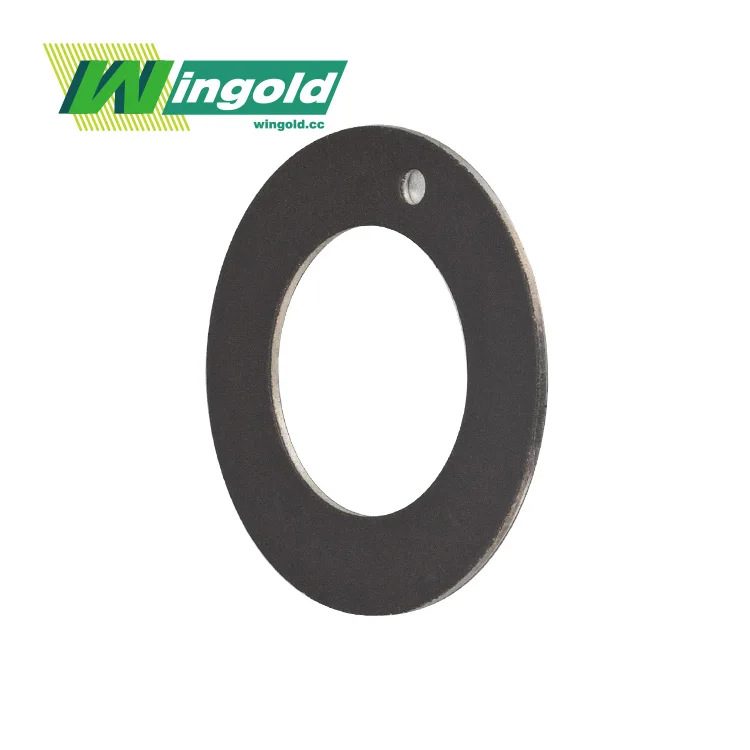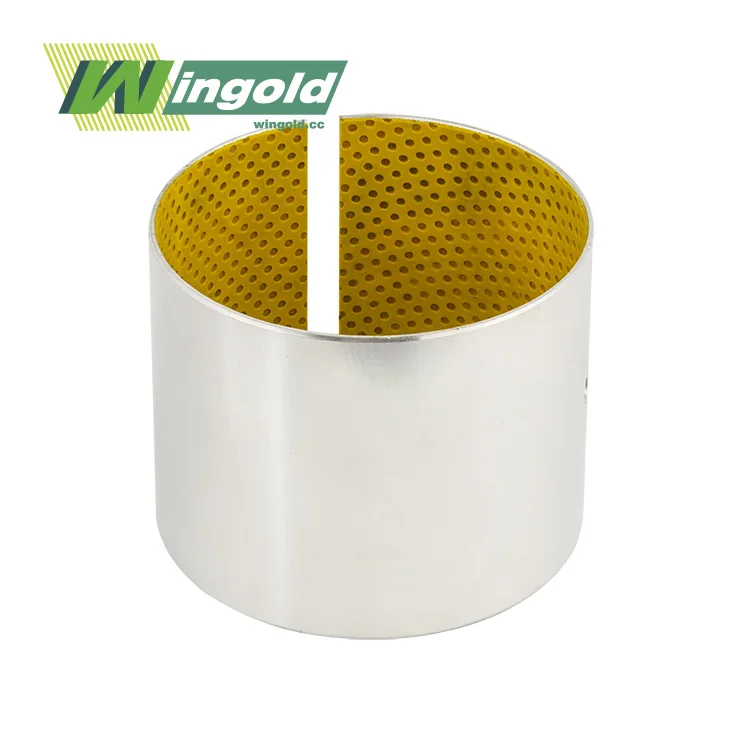Introducing the Structure and Composition of PTFE Bushings

PTFE Composite Bushings: A Closer Look
PTFE composite bushings represent a pinnacle in bearing technology, amalgamating the low-friction properties of polytetrafluoroethylene (PTFE) with robust structural materials. These bushings are fabricated through a process that disperses PTFE particles throughout a matrix of other materials, such as bronze, fiberglass, or carbon fibers. This homogeneous composition results in a bushing that exhibits exceptional wear resistance and load-bearing capabilities.
The inherent structure of PTFE composite bushings allows for a self-lubricating mechanism. As the bushing operates, microscopic amounts of PTFE are transferred to the mating surface, creating a thin, low-friction film. This process, known as tribological transfer, ensures consistent performance throughout the bushing's lifespan without the need for external lubrication.
Moreover, the composite nature of these bushings imparts them with remarkable dimensional stability. Unlike pure PTFE, which can exhibit cold flow under load, PTFE composite bushings maintain their shape and tolerances even under high stress and varying temperatures. This characteristic makes them ideal for applications requiring precision and reliability.
PTFE Lined Bushings: Surface Excellence
In contrast to their composite counterparts, PTFE lined bushings feature a distinct layered structure. These bushings typically consist of a strong metal backing, often made of steel or bronze, overlaid with a thin layer of PTFE material. This construction method capitalizes on the strengths of both components: the metal provides structural integrity and heat dissipation, while the PTFE layer offers unparalleled low-friction performance.
The PTFE lining in these bushings is usually applied through a sintering process, where PTFE powder is heated and bonded to the metal substrate. This results in a durable, adherent layer that can withstand significant wear. The thickness of the PTFE layer is crucial; it must be thin enough to allow for efficient heat transfer through the metal backing, yet thick enough to provide adequate wear life.
PTFE lined bushings excel in applications where minimal startup friction is paramount. The pure PTFE surface provides exceptionally low static and dynamic friction coefficients, making these bushings ideal for intermittent or low-speed operations where stick-slip phenomena can be problematic.
Performance Characteristics and Application Suitability
Load-Bearing Capacity and Durability
PTFE composite bushings demonstrate superior load-bearing capacity compared to their lined counterparts. The integrated structure of these bushings allows for more uniform load distribution throughout the material. This characteristic makes PTFE composite bushings particularly suitable for high-load applications in industries such as heavy machinery, construction equipment, and automotive manufacturing.
The durability of PTFE composite bushings is a notable advantage. The dispersion of PTFE throughout the material means that as wear occurs, new PTFE particles are continuously exposed, maintaining the low-friction properties over an extended period. This feature translates to longer service life and reduced maintenance frequency, making PTFE composite bushings a cost-effective choice for long-term installations.
PTFE lined bushings, while offering excellent low-friction performance, may have limitations in extreme load conditions. The thin PTFE layer, despite its durability, can wear more quickly under high loads or in abrasive environments. However, in applications where loads are moderate and the primary requirement is minimizing friction, PTFE lined bushings remain an excellent choice.
Thermal Performance and Chemical Resistance
Both PTFE composite and lined bushings exhibit impressive thermal performance, a characteristic inherent to PTFE material. They can operate effectively across a wide temperature range, typically from -200°C to +280°C. However, PTFE composite bushings often have a slight edge in thermal management due to their ability to dissipate heat more effectively through their composite structure.
In terms of chemical resistance, both types of bushings perform admirably. PTFE is renowned for its inertness to most chemicals and solvents. This property makes both PTFE composite and lined bushings ideal for use in corrosive environments or applications involving aggressive fluids. Industries such as chemical processing, food production, and pharmaceutical manufacturing benefit greatly from this attribute.
Precision and Dimensional Stability
PTFE composite bushings generally offer superior dimensional stability, especially under load and temperature variations. The composite structure resists deformation, maintaining tight tolerances throughout the bushing's operational life. This characteristic is particularly valuable in precision machinery and equipment where maintaining alignment is critical.
PTFE lined bushings, while offering good dimensional stability, may be more prone to deformation under extreme conditions due to the potential for the PTFE layer to compress or flow. However, in applications where loads are well within specified limits, PTFE lined bushings maintain excellent dimensional stability and can provide precise, low-friction operation.
Selecting the Right PTFE Bushing for Your Application
Factors to Consider in Bushing Selection
Choosing between PTFE composite bushings and PTFE lined bushings requires careful consideration of several factors:
- Load Requirements: For high-load applications, PTFE composite bushings are often the preferred choice due to their superior load-bearing capacity and wear resistance.
- Operating Speed: PTFE lined bushings may be more suitable for low-speed or intermittent operations where minimizing startup friction is crucial.
- Environmental Conditions: Both types perform well in a wide range of temperatures and chemical environments, but PTFE composite bushings may have an edge in extremely harsh conditions.
- Maintenance Expectations: If minimal maintenance is a priority, PTFE composite bushings typically offer longer service life without the need for lubrication.
- Precision Requirements: For applications demanding high precision and dimensional stability, PTFE composite bushings often provide better long-term performance.
Industry-Specific Applications
Different industries may find one type of PTFE bushing more suitable than the other:
- Automotive: PTFE composite bushings are often preferred in suspension systems and steering components due to their durability and load-bearing capacity.
- Aerospace: Both types find applications, with PTFE lined bushings often used in control surface linkages where low friction is critical, and PTFE composite bushings used in more structurally demanding areas.
- Food Processing: PTFE lined bushings are frequently used due to their excellent hygiene properties and ease of cleaning.
- Heavy Machinery: PTFE composite bushings are typically chosen for their ability to withstand high loads and harsh operating conditions.
- Medical Equipment: PTFE lined bushings are often preferred in medical devices due to their smooth operation and biocompatibility.
Cost Considerations and Long-Term Value
When evaluating the cost-effectiveness of PTFE bushings, it's essential to consider both initial costs and long-term value. PTFE composite bushings may have a higher upfront cost but often provide better value over time due to their longer service life and reduced maintenance requirements. PTFE lined bushings, while potentially less expensive initially, may require more frequent replacement in high-wear applications.
Conclusion
Both PTFE composite bushings and PTFE lined bushings offer significant advantages in various industrial applications. The choice between the two depends on a careful analysis of specific operational requirements, environmental conditions, and long-term performance expectations. PTFE composite bushings excel in high-load, high-wear situations and offer exceptional durability and dimensional stability. PTFE lined bushings, on the other hand, provide unmatched low-friction performance, making them ideal for applications where minimizing friction is the primary concern.
As technology advances, both types of bushings continue to evolve, with manufacturers like Wingold Bearing developing innovative solutions to meet increasingly demanding industrial needs. By understanding the unique characteristics of each type of bushing, engineers and designers can make informed decisions to optimize performance, reduce maintenance, and enhance the overall efficiency of their machinery and equipment.
For more information on selecting the right PTFE bushing for your specific application or to explore customized solutions, don't hesitate to contact Wingold Bearing at info@wingold.cc. Our team of experts is ready to assist you in finding the perfect bearing solution for your needs.
FAQ
What is the main difference between PTFE composite bushings and PTFE lined bushings?
PTFE composite bushings have PTFE material integrated throughout their structure, while PTFE lined bushings have a thin PTFE layer on a metal backing.
Which type of bushing is better for high-load applications?
PTFE composite bushings generally perform better in high-load applications due to their superior load-bearing capacity and durability.
Are PTFE bushings self-lubricating?
Yes, both PTFE composite and lined bushings are self-lubricating, eliminating the need for external lubrication in most applications.
How do I choose between PTFE composite and lined bushings for my application?
Consider factors such as load requirements, operating speed, environmental conditions, maintenance expectations, and precision requirements to determine the best choice for your specific application.



